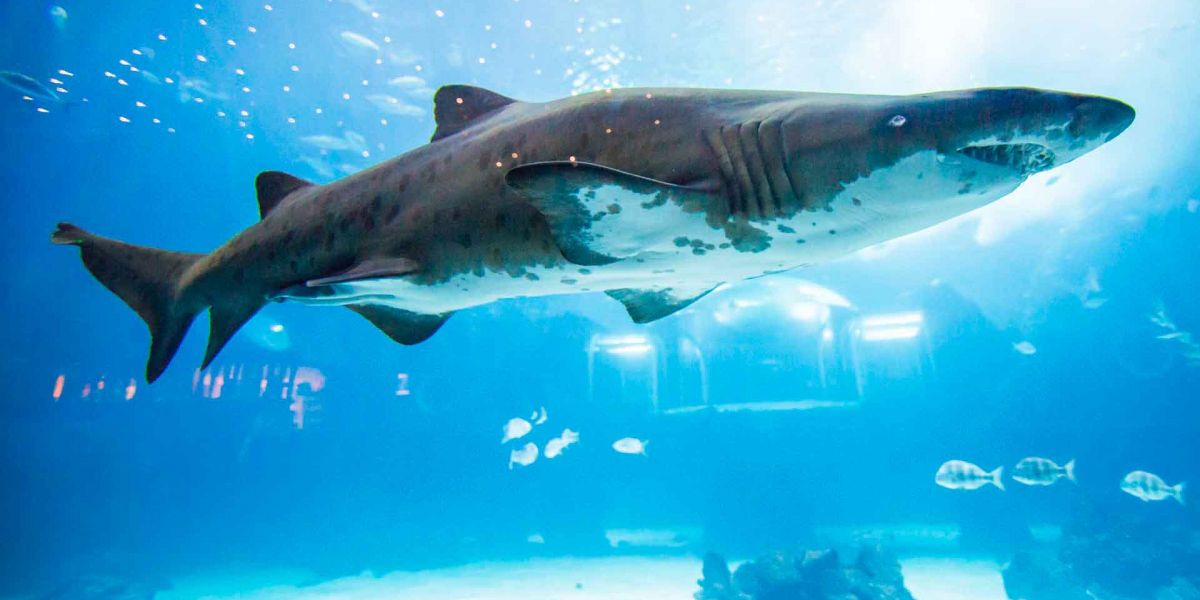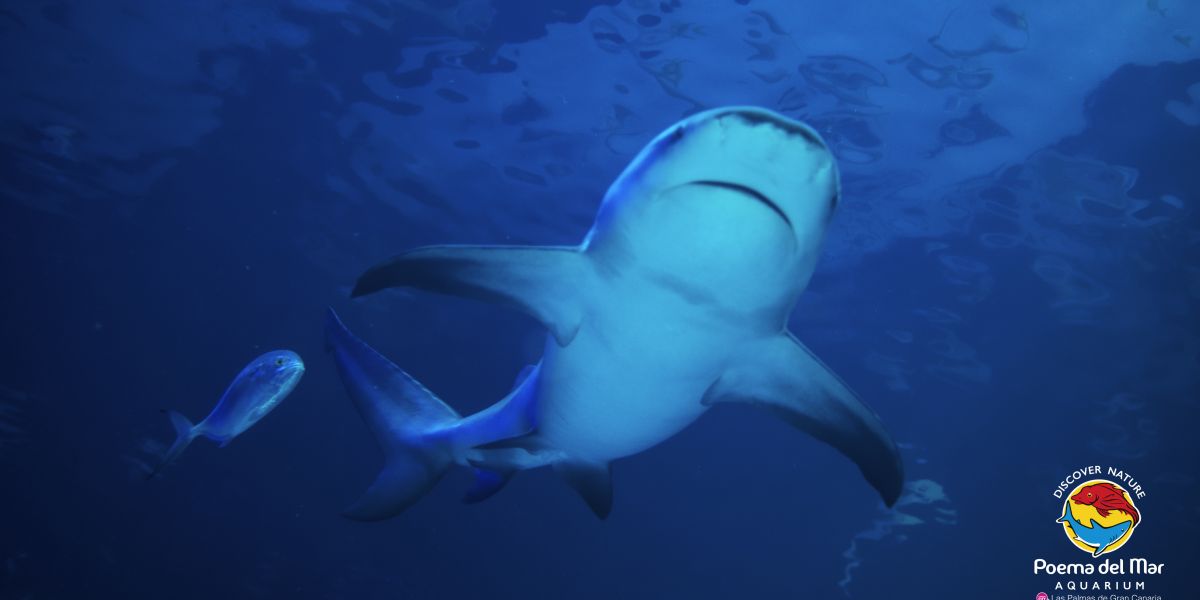Sharks in the Canary Islands: A unique adventure
Are there sharks in the Canary Islands? More than 85 species of sharks, rays, and mantas inhabit the waters around the Canary Islands. They are an essential part of the marine ecosystem and play a crucial role in maintaining ocean health.
At Poema del Mar, we want you to get to know the most important species that inhabit our seas, especially those living in the Deep Sea, one of the world’s largest habitats for sharks and rays under human care.

Which shark species can you see in the Canary Islands?
Are you passionate about marine life and curious about which shark species inhabit the Canary Islands? Then keep reading!
Sharks at Poema del Mar
At Poema del Mar, you can meet these sharks native to the Canary Islands. Will you join us in uncovering the secrets of these fascinating creatures?
Smooth-hound shark (Mustelus mustelus)
The smooth-hound is a common shark in Canarian waters, reaching up to two metres in length. Its diet consists mainly of crustaceans, cephalopods and fish. It inhabits depths from 5 to over 600 metres. This viviparous species gives birth to several pups at once.
Often confused with the small-spotted catshark, the smooth-hound can be distinguished by its larger second dorsal fin. Sadly, it is listed as Endangered due to overfishing, although it is still regularly sold under the name of “dogfish”.
Blackspotted smooth-hound (Mustelus punctulatus)
This species reaches up to 1.9 metres, usually around 1.2 metres. It lives in the eastern Atlantic, from the Mediterranean to Western Sahara, mainly around coastal zones and continental shelves. Its diet is largely composed of crustaceans, cephalopods and small fish.
It is viviparous, with a gestation of 11 months and offspring measuring 24.5–30.5 cm at birth. Classified as vulnerable by the IUCN. Its body, covered in black spots, makes it easily distinguishable.
Bull shark (Carcharhinus leucas)
The bull shark is one of the star attractions of the Deep Sea zone at Poema del Mar. Impressive for its sheer size and power, this shark can be observed through panoramic windows displaying its natural behaviour in a faithful recreation of the ocean.
It usually shares space with other large species such as rays and nurse sharks, creating a spectacular underwater scene.
Sand tiger shark (Carcharias taurus)
Although rarely seen in the Canary Islands, the sand tiger shark is known from reports and fossil teeth found in the Macaronesia region.
At Poema del Mar, several individuals are housed as part of a conservation and breeding programme. Classified as Critically Endangered by the IUCN, each specimen in the aquarium has its own name, allowing aquarists and vets to monitor its welfare individually.
Other Sharks of the Canary Islands
If you are still curious about the sharks that roam Canarian waters, here are some of the most notable:
Angel shark (Squatina squatina)
Easily recognised by its flattened, ray-like body, the angelshark inhabits shallow sandy seabeds. While populations in Europe and the Mediterranean have declined drastically due to bottom trawling, the Canary Islands remain one of its last refuges. It is now a protected species in the archipelago and a symbol of marine conservation.
Mako shark (Isurus oxyrinchus)
Identified by its crescent-shaped tail and pointed snout, this pelagic shark lives in deep, open waters. Though rarely spotted near the coast, juveniles are occasionally observed around the Canary Islands, highlighting the richness of the archipelago’s marine biodiversity.
Great white shark (Carcharodon carcharias)
Although it is one of the most well-known sharks, sightings near the coast are extremely unlikely. It inhabits deep waters and rarely approaches the islands due to the lack of prey such as seals or penguins. The aproaches are mainly linked to juvenile rearing.
Basking shark (Cetorhinus maximus)
The second-largest fish in the world, this gentle giant feeds solely on plankton. Migrating to warmer waters in winter, it may pass through the Canary Islands or Madeira. However, sightings near the coast are uncommon.
Whale shark (Rhincodon typus)
The largest fish in the world, the whale shark can measure up to 12 metres. Occasionally visiting Canarian waters, it is harmless and feeds exclusively on plankton, an awe-inspiring sight for divers and marine enthusiasts.
Hammerhead shark (Sphyrna spp.)
Among the most enigmatic sharks, the hammerhead is occasionally spotted near the coast of Las Palmas de Gran Canaria.
Although often viewed as dangerous, hammerheads tend to avoid human encounters. Their unusual head shape and mysterious behaviour make them one of the most fascinating shark species inhabiting the archipelago.

Visit the Canary Islands and experience sharks close up!
Sharks are an essential part of the marine ecosystem of the Canary Islands and offer a unique experience for nature lovers and divers.
A visit to Poema del Mar offers the chance to witness some of the majestic sharks, that can be found in the Canary Islands, up close in the Deep Sea.
Buy your ticket now and embark on an extraordinary journey into the world of sharks!